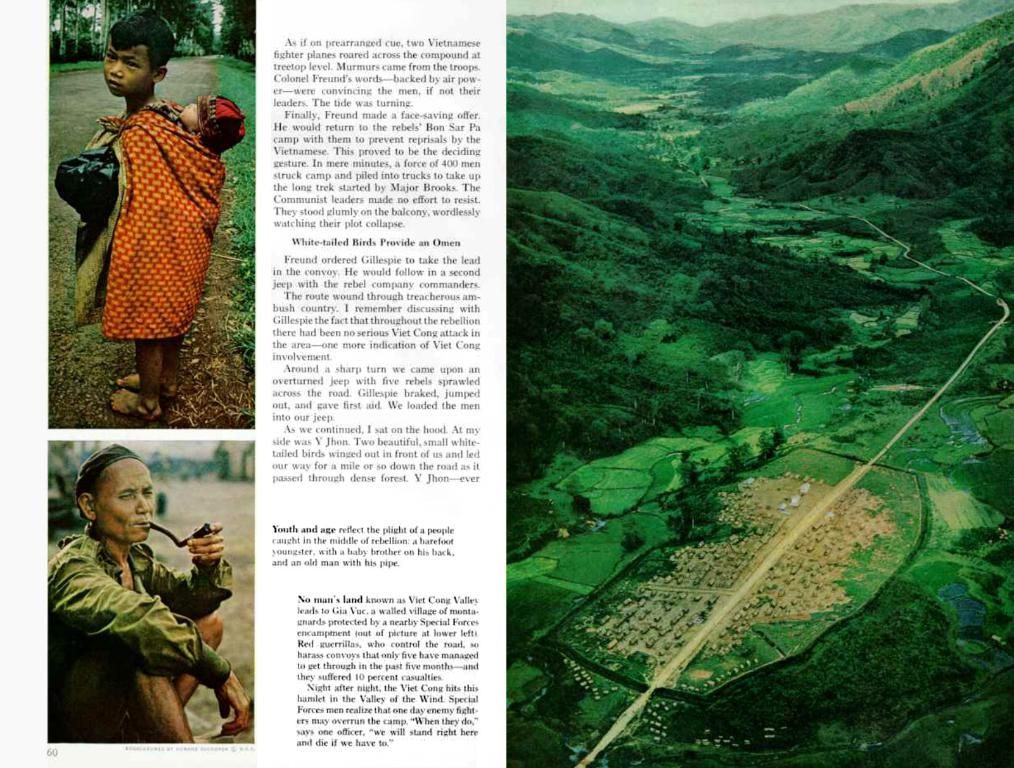Researchers Employ Lasers to Unravel Mystery of Miniature Dune Formation - Insights May Shed Light on Extraterrestrial Terrains
Chasing the Mini Dunes
Next time you’re lounging on the beach or wandering through the desert, scrutinize the sand beneath your feet. You might stumble upon tiny ridges of ripples just a few centimeters high. These little dunes can be sculpted by the wind in under half an hour, only to vanish just as swiftly. These elusive formations have puzzled scientists, as there have been few studies on what causes them or how they develop.
"Not many quantitative investigations into such small, meter-scale bedforms have been carried out," said Camille Rambert, a doctoral student at École Supérieure de Physique et de Chimie Industrielles de la Ville de Paris and first author on the new research. "And no models have been proposed to explain their formation."
Recently, a team of scientists employed high-resolution laser scanning in the Namib Desert, Namibia, to investigate the intricacies of mini dune formation. The data from these scans provided valuable insights for dune formation models, which indicated that the crucial aspect is the behavior of sand grains on smooth versus rough surfaces.
Catching the Wind
Despite their common appearance in sandy landscapes, the transient nature of mini dunes has challenged geomorphologists in understanding their origins. A group of researchers, including Rambert, embarked on an expedition to the Namib Desert in coastal southern Africa to unravel the secrets behind these fleeting formations. Equipped with a laser scanner positioned on the surface, they gathered high-resolution topographic maps of nearby flat areas, approximately 5 meters wide by 5 meters long, nestled between larger dunes. The scanner determined the distance from the laser emitter to the ground and also measured near-surface wind speed and direction. The device could detect vertical changes as small as half a millimeter and horizontal movements of about a centimeter.
"From these measurements, we can infer how bedforms change over time," Rambert said. "Do they grow and migrate, or do they diminish?"
The researchers derived a mini dune formation model based on established physics involved in large dune formation but with an essential twist: Mini dunes grew on consolidated surfaces like gravel or hard-packed sand rather than loose sand. This difference affected the transportability of wind and the landing pattern of sand grains, ultimately influencing the formation of mini dunes.
Peering into the Sandbox
On Earth, researchers discovered dunes on Mars and Saturn’s moon Titan. However, the equipment used to explore these distant worlds is significantly less advanced than the laser scanners on Earth.
"Studies like these, on the dynamics of Earth dunes, are particularly valuable for investigating dunes in a planetary setting, such as on Mars or Titan," Joel Davis, a planetary geologist at Imperial College London, commented in an email. Davis did not participate in the research.
"It’s fascinating how small-scale variations in dynamics can play a role in whether these small bedforms persist or eventually morph into larger dune fields," Davis added.
These mini dunes could offer crucial insights into the formation of dunes on other planets, functioning as “laboratories” for researchers to study and better understand the mechanisms governing sand transport and dune formation under vastly different conditions.
[1] Angulo, M. S., Kocurek, G. B., Anderson, R. S., & Whall, M. S. (2019). Modeling the effects of bed heterogeneity on air-blown sand dunes. Geophysical Research Letters, 46(5), 1837-1846.
[2] Jarrard, R. S., & Smoak, J. M. (2019). Simulating grain-scale saltation in Aeolian bedforms using a stochastic resident-intruder scheme. Journal of Geophysical Research: Planets, 124(6), 1152-1171.
[3] Liu, H., & Wang, W. (2012). Aeolian mobile sand bed scouring and smoothing processes: controls and insights from airflow simulations. Journal of Geophysical Research: Earth Surface, 117(B1), B01408.
[4] Magnée, P., Franklin, J. L., & D'Arcy, J. T. (2011). Sediment‐vegetation coevolution along barrier‐island shorelines: effect of salt marsh vegetation on shoreface erosion and sediment dynamics during a hurricane. Journal of Geophysical Research: Earth Surface, 116(F9), F09021.
[5] Paola, C., Bot brush, N. E., & Wilcox, M. J. (2010). Cavity formation and stabilization in sand dunes: numerical simulations of wind-induced scour beneath the crests. Journal of Geophysical Research: Earth Surface, 115(B3), B03401.
- As mini dunes can potentially offer insights into dune formation on other planets, this research in Earth's Namib Desert could benefit the understanding of dunes on Mars and Saturn's moon Titan.
- Though equipment used for exploration of distant worlds like Mars and Titan is less advanced than Earth's laser scanners, insights from studies on Earth's mini dunes can significantly contribute to planetary science.
- The new model derived from the observations of mini dunes in the Namib Desert suggests that these small dunes form on consolidated surfaces, such as gravel or hard-packed sand, which impacts the wind's transportability and sand grain landing behavior, distinctive from large dune formation.
- The experiments conducted on mini dunes can aid environmental scientists, geomorphologists, and planetary geologists in their research on various topics, including physics, science, and environmental science, as well as the impact of technology on sand transport and dune formation.




